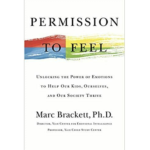Because cognitive science gives us such good guidance about learning, we want to share that information with our students.
“Study THIS WAY!” we cry. “Research says so!”
Alas, all too often, students don’t follow our advice.
A key part of the problem: the research that supports our advice is — ahem — really complicated and abstract. We might find it convincing, but our students’ eyes glaze over when we try to explain.
Because I talk frequently talk with students about brain research, I’m always on the lookout for research that…
… is methodologically sound,
… supports useful studying advice, and
… is easy to explain.
I’ve found such a study [updated link], and I think we can explain it to our students quite easily.
Two Are Better Than One
We all know the research showing that sleep helps consolidate long-term memory formation (fun studies here).
We all know the research showing that spreading practice out is better than doing it all at once (fascinating research here).
How about doing both? How about doing two study sessions, and sleeping in between them?
If we could convince our students to adopt those two strategies, that would be GREAT.
And, the research necessary to test that advice is — conceptually, at least — easy to do.
Students learned a topic: French-Swahili word pairs. (This research was done in France.)
Half of them did that at 9 am, and then tested themselves 12 hours later, at 9 pm. (Note: they did not sleep between these two sessions.)
How many times did these non-sleepers have to go through their flashcards to get all the answers right?
On average, they reviewed flashcards 5.8 times to get all those word pairs right. (For the sake of simplicity, let’s just call that 6.)
The other half learned the French-Swahili word pairs at 9 pm. They then got a good night’s sleep, and tested themselves 12 hours later, at 9 am.
How many times did the sleepers go through flashcards to get all the word pairs right? On average, they got them all right on the third attempt.
That’s right: instead of 6 review sessions, they needed 3.
Can We Do Better?
Okay, so far this study is easy to explain and shows real promise. Because they spread practice out AND slept, they cut study time IN HALF to get all the answers right.
But, so far this research measures learning 12 hours later. That’s not really learning. What happens if we test them later?
Specifically, what happens if we test them 6 months later?
Hold onto your hat.
When the researchers retested these students, the non-sleepers remembered 4 of those word pairs. The sleepers remembered 8 pairs.
So: HALF as much review resulted in TWICE as much learning 6 MONTHS later.
The Headline Please
When I talk with students about brain research, I start with this question: “Would you like to study less and learn more?”
I have yet to meet the student who doesn’t get behind that goal.
This easy-to-explain study shows students that half as much review leads to twice as much memory formation — if they both spread practice out over time and sleep between review sessions.
I think we have a winner.



![AdobeStock_342990650_Credit [Converted]](https://www.learningandthebrain.com/blog/wp-content/uploads/2020/06/AdobeStock_342990650_Credit-Converted-150x150.jpg)

Hi from Prof Peter Shephard in Malaysia. I have just finished a webinar on learning and the brain with a University Faculty in India. I got a question about learning in our sleep. Bingo! I read this article and you partially answered my question. Very helpful! My next webinar with the Faculty is in one hour. Thank you for this sharing.
I’m glad we could provide timely help! Let me know if I can answer the rest of your question — LOTS of fascinating research in this field.